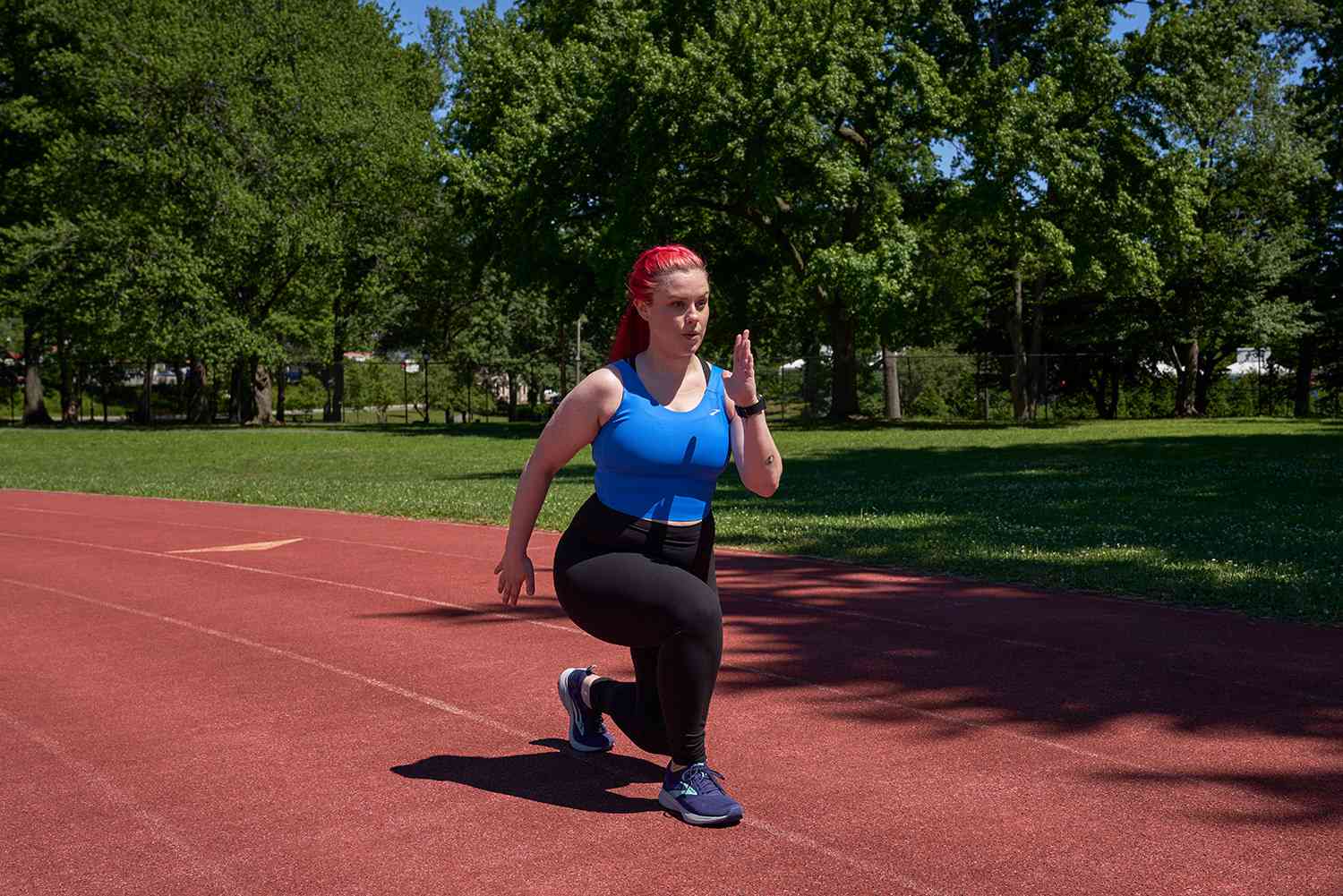

Featured
How To Breathe For Long Distance Running
Modified: August 21, 2023
Learn the featured technique on how to breathe properly for long-distance running and improve your endurance. Enhance your running performance with these essential tips.
Introduction
When it comes to long-distance running, physical endurance and stamina play a crucial role in determining your performance. However, there is another often overlooked aspect that can greatly impact your success: proper breathing technique. Breathing, the simple act of inhaling and exhaling, may seem like second nature, but when it comes to running long distances, it becomes essential to optimize your breathing patterns in order to maximize your performance and endurance.
In this article, we will explore the importance of proper breathing technique for long-distance running and provide you with practical tips and exercises to improve your respiratory efficiency. Understanding the mechanics of breathing, learning how to coordinate your breathing with your running cadence, and avoiding common mistakes are all key factors for achieving optimal breathing during long-distance runs.
By implementing the right breathing techniques, you can increase your oxygen intake, improve your running efficiency, and reduce fatigue, enabling you to go the extra mile and reach your running goals. So, let’s dive in and discover how to unlock the power of effective breathing for long-distance running!
Importance of Proper Breathing Technique for Long Distance Running
Proper breathing technique is a fundamental aspect of long-distance running that can significantly impact your performance. When you run, your muscles require a constant supply of oxygen to function optimally. Inadequate breathing can lead to inefficient oxygen delivery, causing fatigue, discomfort, and a decrease in overall performance.
One of the key benefits of proper breathing technique is maximizing oxygen intake. Deep inhalation and exhalation allow you to take in more oxygen and expel carbon dioxide efficiently. This increased oxygen supply helps fuel your muscles and boosts your endurance, allowing you to maintain a steady pace and power through long distances.
In addition, effective breathing techniques can help you maintain a relaxed and controlled running form. When you breathe correctly, your body stays relaxed, reducing muscle tension and preventing the build-up of lactic acid. This can delay the onset of fatigue and keep you running strong for longer periods.
Proper breathing technique also plays a role in regulating your heart rate. Deep and controlled breathing helps to keep your heart rate in check, preventing it from spiking and causing unnecessary exertion. By maintaining a steady heart rate, you can conserve energy and sustain your performance throughout the run.
Furthermore, mastering proper breathing technique can improve your mental focus and concentration. When your breathing is steady and rhythmic, it can have a calming effect on your mind, allowing you to stay focused and maintain a positive mindset during the challenges of long-distance running.
Lastly, proper breathing technique can aid in the prevention of common running injuries. When you breathe properly, you engage your diaphragm, which provides stability and support to your core muscles. This stability transfers to your lower body, reducing the risk of muscle imbalances and injuries such as strains and sprains.
Overall, understanding and implementing proper breathing techniques is essential for long-distance runners looking to enhance their performance. By optimizing your breathing patterns, you can increase oxygen intake, improve running efficiency, reduce fatigue, and prevent injuries. Now that we’ve explored the importance of proper breathing, let’s delve into the mechanics of breathing and how you can improve your respiratory efficiency for long-distance running.
Understanding the Mechanics of Breathing
Before we dive into the various breathing techniques, it’s important to have a basic understanding of the mechanics of breathing. Breathing is a complex process that involves the coordination of several muscles and the functioning of the respiratory system.
When you inhale, the primary muscle responsible for breathing, known as the diaphragm, contracts and moves downward. This creates more space in your chest cavity, allowing the lungs to expand. As the lungs expand, air is drawn in through the nose or mouth and fills the lungs.
During exhalation, the diaphragm relaxes and moves back up, decreasing the space in the chest cavity. This causes the lungs to compress, expelling air rich in carbon dioxide from the body.
In addition to the diaphragm, other muscles also play a role in breathing, such as the intercostal muscles located between the ribs. These muscles help expand and contract the rib cage, further facilitating the inhalation and exhalation process.
Proper breathing for long-distance running requires a focus on diaphragmatic breathing, also known as belly breathing. This involves actively engaging the diaphragm by allowing the belly to expand on inhalation and contract on exhalation.
In contrast, shallow chest breathing, which involves primarily using the muscles in the chest and shoulders, is a common mistake that can lead to inefficient breathing. Shallow breathing restricts the amount of oxygen that can be taken in, resulting in decreased performance and increased fatigue.
By understanding the mechanics of breathing and the importance of diaphragmatic breathing, you can now move on to mastering the proper breathing techniques that will enhance your long-distance running performance. In the next section, we will explore pre-run breathing exercises to help you prepare for your runs.
Pre-run Preparation: Deep Breathing Exercises
Before you embark on your long-distance run, it’s important to properly prepare your body and mind. Deep breathing exercises can help to relax and expand your lungs, increase oxygen intake, and improve overall respiratory efficiency. These exercises are beneficial in priming your body for the demands of long-distance running.
One effective deep breathing exercise is diaphragmatic breathing. Find a comfortable seated or lying position. Place one hand on your chest and the other on your belly. Take a slow, deep breath in through your nose, allowing your belly to rise as you fill your lungs with air. Exhale slowly through your mouth, focusing on the descent of your belly. Repeat this exercise for several minutes, feeling your breath become deeper and more controlled.
Another breathwork technique to try is alternate nostril breathing, also known as Nadi Shodhana. This practice helps balance the right and left hemispheres of the brain, promoting a sense of calm and focus. Start by sitting in a comfortable position and closing your right nostril with your right thumb. Inhale deeply through your left nostril, then close it with your right ring finger. Release your thumb and exhale through your right nostril. Inhale through your right nostril, close it with your thumb, and exhale through your left nostril. Continue this pattern for several minutes, alternating the breath between each nostril.
Box breathing, or square breathing, is another effective technique for pre-run preparation. Begin by inhaling to a count of four, filling your lungs with air. Hold your breath for a count of four. Exhale slowly for a count of four, completely emptying your lungs. Hold your breath again for a count of four before repeating the cycle. Focus on maintaining a steady rhythm and full breaths throughout the exercise.
Remember to be consistent with your deep breathing exercises and incorporate them into your pre-run routine. These exercises not only help calm the mind and increase oxygen intake but also serve as a valuable opportunity to center yourself and mentally prepare for the upcoming run.
By incorporating these deep breathing exercises into your pre-run preparation, you can optimize your breathing patterns and set the stage for a successful and enjoyable long-distance run. In the next section, we will explore breathing techniques specifically tailored for during your runs.
Breathing Techniques During Long Distance Running
When it comes to long-distance running, mastering the right breathing techniques can make a significant difference in your performance and overall running experience. The following are some effective breathing techniques to help you maintain a steady flow of oxygen during your runs:
- Full Belly Breathing: As you run, focus on taking deep breaths and expanding your belly with each inhalation. This allows for maximum lung capacity and helps to prevent shallow chest breathing.
- Rhythmic Breathing: Coordinate your breathing with your running cadence. For example, if you’re running at a comfortable pace, aim for a 2:2 ratio – inhaling for two steps and exhaling for two steps. As you increase your pace, you can transition to a 2:1 ratio, inhaling for two steps and exhaling for one step. This helps to establish a rhythm and keeps your breathing in sync with your stride.
- Cadence-Based Breathing: Another effective strategy is matching your breathing to your cadence. This involves inhaling for a certain number of strides and exhaling for the same number of strides. For example, if your cadence is 180 steps per minute, you might inhale for three steps and exhale for three steps. Adjust the ratio as needed to find a rhythm that feels comfortable for you.
- Breathe Through Your Nose: Breathing through your nose can help to filter, warm, and humidify the air before it reaches your lungs. This can be especially beneficial in cold or dry conditions. Practice nasal breathing during your training runs to gradually build up your ability to sustain it during longer distances.
- Breath Control: Practice breath control exercises, such as inhaling deeply for a certain count and exhaling slowly for a longer count. This deliberate control of your breath can help regulate your breathing rate and improve overall oxygen utilization during your runs.
Experiment with these breathing techniques during your training runs to find the method that works best for you. It’s important to find a rhythm and pattern that feels natural and allows for optimal oxygen intake.
Remember, every runner is different, and what works for one may not work for another. Listen to your body, pay attention to your breathing, and make adjustments as needed. With consistent practice and experimentation, you will find the breathing technique that enhances your long-distance running performance.
Coordinating Breathing with Running Cadence
Coordinating your breathing with your running cadence is a crucial aspect of optimizing your breathing during long-distance running. By synchronizing your breaths with your stride, you can establish a rhythm that promotes efficiency and helps you maintain a steady pace. Here are some tips for coordinating your breathing with your running cadence:
- Match your breaths with your strides: Pay attention to the number of steps you take while inhaling and exhaling. For example, you can try inhaling for three steps and exhaling for three steps. Experiment with different ratios to find the pattern that feels most comfortable and natural for you.
- Adapt your breathing to your pace: As your running pace changes, your breathing pattern may need to adjust accordingly. When running at a slower pace, you might need a longer inhale and exhale, while at a faster pace, a shorter inhale and exhale may be more appropriate.
- Focus on exhaling during exertion: During moments of increased effort, such as when going uphill or sprinting, prioritize your exhale. This helps in releasing carbon dioxide and expelling waste air from your body. Exhalation also aids in engaging the core muscles and promoting a more efficient running form.
- Use your breath as a rhythm guide: Your breathing can act as a metronome, providing a steady rhythm to guide your running cadence. By focusing on your breath and establishing a consistent pattern, you can maintain a smooth and efficient running stride.
- Listen to your body: While it’s important to synchronize your breathing with your running cadence, it’s equally important to listen to your body’s cues. Be flexible and adjust your breathing as needed to accommodate changes in pace, terrain, and overall comfort.
Remember that coordinating your breathing with your running cadence may require some practice and experimentation. Pay attention to how your body responds and adjust your breathing technique accordingly. With time and consistent practice, this coordination will become more automatic, leading to more efficient and enjoyable long-distance runs.
Tips for Efficient Breathing during Long Distance Running
To optimize your breathing during long-distance running, consider implementing the following tips and techniques into your training routine:
- Maintain good posture: Stand tall with your shoulders relaxed and your chest open. Good posture allows for easy and unrestricted airflow, enhancing your breathing efficiency.
- Relax your upper body: Avoid tensing your shoulders, neck, and facial muscles while running. Relaxation in the upper body promotes a more natural and unrestricted breathing pattern.
- Focus on deep belly breathing: Engage your diaphragm and breathe deeply into your belly rather than shallow chest breathing. This allows for maximized oxygen intake and improved respiratory efficiency.
- Practice controlled breathing: Aim for controlled, rhythmic breaths rather than short, fast breaths. Focus on exhaling fully to release carbon dioxide and create space for fresh oxygen during inhalation.
- Find your optimal breathing pattern: Experiment with different breathing ratios and patterns to find what feels most comfortable for you. Pay attention to how your body responds to different patterns and adjust as needed.
- Stay hydrated: Proper hydration is essential for efficient breathing. Dehydration can lead to dry airways and reduced lung function. Drink water regularly to maintain optimal hydration levels.
- Use visual or auditory cues: Some runners find it helpful to sync their breathing with specific visual or auditory cues, such as matching their breath to their footsteps, a song’s beat, or a metronome. This can help establish and maintain a rhythmic breathing pattern.
- Practice breathing techniques during training: Incorporate specific breathing exercises, such as diaphragmatic breathing, alternate nostril breathing, or box breathing, into your regular training routine. This will help strengthen your respiratory muscles and improve breath control.
- Listen to your body: Every runner’s breathing needs are unique. Pay attention to any signs of discomfort or shortness of breath. If necessary, slow down or take short walking breaks to recover and regain control of your breath.
- Gradual increases in distance and intensity: Build your endurance gradually and allow your body time to adjust to the increased demands of long-distance running. This will help prevent overexertion and ensure that your breathing remains steady and controlled.
Implementing these tips and techniques into your running routine can help you develop efficient breathing habits, maximize oxygen intake, and enhance your overall long-distance running performance.
Common Mistakes to Avoid
While it’s important to focus on proper breathing techniques during long-distance running, it’s equally vital to be aware of common mistakes that can hinder your performance. By avoiding these pitfalls, you can ensure that your breathing remains efficient and effective throughout your runs. Here are some common mistakes to watch out for:
- Shallow chest breathing: Relying on shallow breathing, which primarily uses the chest muscles instead of the diaphragm, reduces your lung capacity and can lead to fatigue and decreased performance. Focus on deep belly breathing to promote optimal oxygen intake.
- Over-breathing or hyperventilation: Taking quick, shallow breaths or breathing too rapidly can disrupt the balance of oxygen and carbon dioxide in the body. This can lead to dizziness, lightheadedness, and muscle cramps. Maintain a steady and controlled breathing rate.
- Ignoring posture and upper body tension: Poor posture and unnecessary tension in the shoulders, neck, and facial muscles can restrict airflow and impede breathing. Stay mindful of your posture and consciously relax your upper body while running.
- Starting too fast: An overly ambitious starting pace can lead to rapid breathing and quickly deplete your energy reserves. Pace yourself appropriately to avoid breathlessness and fatigue.
- Failure to adapt breathing to changing conditions: Different running conditions, such as uphill climbs or adverse weather, may require adjustments in your breathing pattern. Be adaptable and modify your breathing technique as needed.
- Not hydrating adequately: Dehydration can lead to dry airways and hinder optimal breathing. Drink enough water before, during, and after your runs to maintain proper hydration levels.
- Attempting to control breathing too much: While it’s essential to focus on proper breathing technique, it’s equally important to let your body find its natural rhythm. Overthinking and trying to control every breath can disrupt your natural breathing pattern.
- Ignoring signs of overexertion: Pushing yourself too hard without allowing for recovery can lead to excessive breathlessness and decreased performance. Listen to your body and take breaks when necessary to avoid overexertion.
- Skipping breathing exercises and warm-ups: Neglecting pre-run breathing exercises and warm-ups can hinder your body’s ability to establish an optimal breathing pattern. Make these exercises a part of your regular routine to prepare your body for efficient breathing during your runs.
- Not seeking guidance or feedback: Sometimes, it can be challenging to identify and correct breathing mistakes on your own. Seeking guidance from a running coach or experienced runners can help you identify areas for improvement and make necessary adjustments to your breathing technique.
By being mindful of these common mistakes and making conscious efforts to avoid them, you can optimize your breathing and enhance your overall long-distance running experience.
Benefits of Proper Breathing for Long Distance Running
Proper breathing technique goes beyond just providing oxygen to your muscles. It offers a range of benefits that can significantly impact your long-distance running performance. Here are some key advantages of incorporating proper breathing into your running routine:
- Improved oxygen intake: Proper breathing technique allows for deeper inhalation and efficient oxygen exchange, resulting in increased oxygen intake. This oxygen fuels your muscles, enhancing endurance and delaying the onset of fatigue.
- Enhanced running efficiency: When you breathe correctly, your body stays relaxed, reducing muscle tension and unnecessary energy expenditure. Proper breathing helps you maintain a more efficient running form, conserving energy for longer distances.
- Increased lung capacity: Deep breathing exercises and proper breathing technique can expand your lung capacity over time. This allows your lungs to take in larger volumes of air, maximizing oxygen absorption and supporting better overall respiratory function.
- Regulated heart rate: By mastering your breathing, you can regulate your heart rate during long-distance running. Deep, controlled breaths help maintain a steady heart rate, preventing it from spiking and ensuring efficient cardiovascular function.
- Mental focus and stress reduction: Proper breathing techniques have a calming effect on the mind and can help reduce stress and anxiety. When your breathing is steady and rhythmic, it promotes mental focus, enhances concentration, and keeps negative thoughts at bay during the challenges of long-distance running.
- Improved muscle oxygenation: Efficient breathing supplies muscles with sufficient oxygen, aiding in the elimination of waste products such as carbon dioxide. This helps prevent muscle cramps, reduces muscle fatigue, and allows for better muscular endurance during long-distance runs.
- Enhanced recovery: Proper breathing techniques can aid in recovery by promoting better oxygen flow to muscles post-run. This facilitates the removal of waste products and reduces muscle soreness, allowing for faster recovery and reduced downtime between runs.
- Reduced risk of injury: Engaging your diaphragm and maintaining proper breathing technique provides stability and support to your core muscles. This stability extends to your lower body, reducing the risk of muscle imbalances and injuries such as strains and sprains.
- Improved overall well-being: Long-distance running with proper breathing technique can provide an overall sense of well-being. The increased oxygenation and release of endorphins during running contribute to improved mood, reduced stress, and enhanced mental and emotional well-being.
By focusing on proper breathing technique, you can enjoy these benefits and unlock your full potential as a long-distance runner. Incorporate specific breathing exercises, practice mindfulness, and pay attention to your breath during runs to maximize these advantages and elevate your performance.
Conclusion
Proper breathing technique is a crucial aspect of long-distance running that often goes overlooked. By understanding the mechanics of breathing, practicing deep breathing exercises, coordinating your breathing with your running cadence, and avoiding common mistakes, you can greatly enhance your performance and endurance.
Efficient breathing during long-distance running improves oxygen intake, muscular oxygenation, and running efficiency. It helps regulate your heart rate, promotes relaxation and mental focus, and reduces the risk of muscle imbalances and injuries.
To optimize your breathing, maintain good posture, practice deep belly breathing, and find a breathing pattern that syncs with your running cadence. Stay mindful of common mistakes such as shallow breathing, over-breathing, and poor hydration.
Remember, the benefits of proper breathing extend beyond running. They positively impact your overall well-being, enhance recovery, and contribute to a more enjoyable running experience.
Incorporate breathing exercises into your pre-run routine, experiment with different techniques during training runs, and listen to your body to find the breathing technique that works best for you.
By prioritizing proper breathing technique and making it an integral part of your running practice, you can unlock your full potential as a long-distance runner and achieve your goals with greater ease and enjoyment.









